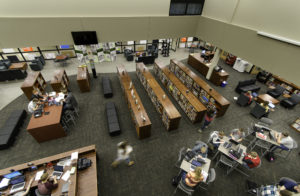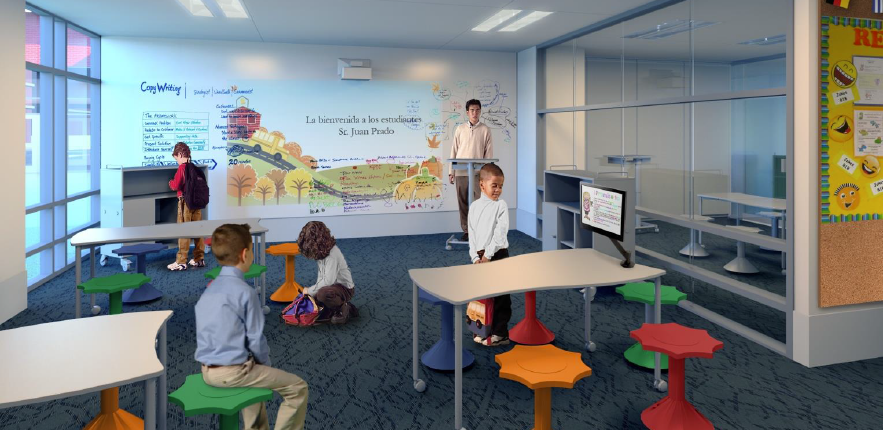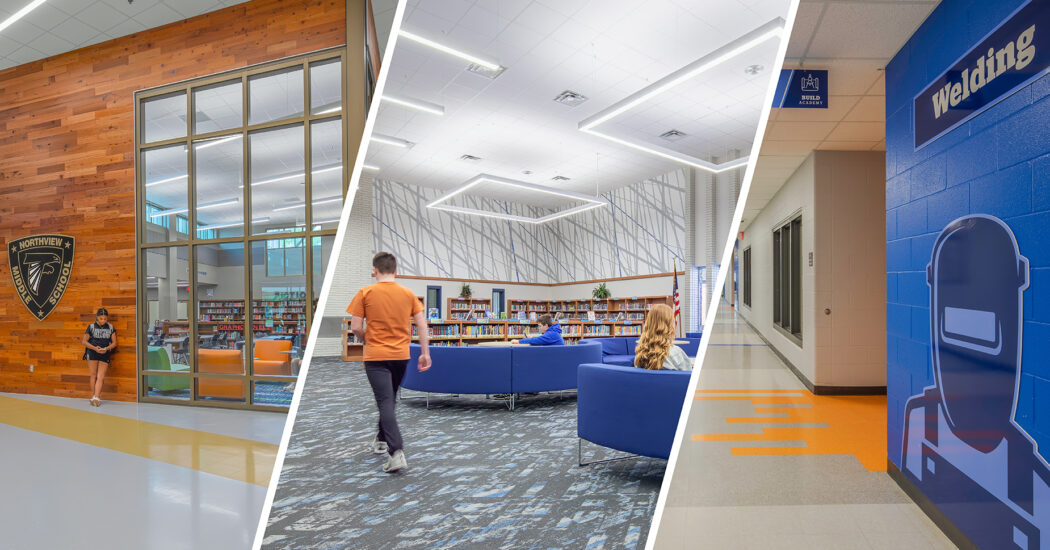Current trends of K-12 media spaces
-
Category
Studio-K12 -
Posted By
Anna Marie Burrell -
Posted On
Dec 16, 2015
Media Centers are always evolving in the school setting. Thoughtful design is mandatory to ensure spaces are utilized to their maximum potential and tailored to the ultimate goal of enhancing the student, teacher, and community member experience. Here are some current trends critical to a school’s Media Center space.
Flexibility
Looking at how the space can be flexible. A variety of flexible and inviting furnishings; prolific technology and power integration; and a variety of private, semi-private, and public spaces are often incorporated throughout evolving media centers. Design flexibility such as movable book shelves and adjustable furniture allows the space to be modified as technology and desires change.

Western Boone Jr./Sr. Media Center
Semi-Private Space
Media Centers are not purely quiet places anymore. We have found that commons spaces—open, sunlit, airy spaces with flexible seating, bordered by glass walled group study rooms—are popular, while their adjacent spaces are quiet and controllable. These spaces allow students to see and be seen, work in groups, and safely access technological resources.
Multi-Purpose Spaces/Maker Spaces
Designed to flex in both size and function, multi-purpose spaces can offer a venue to drive public events, lectures, maker space activities, group activities, teacher meetings, etc. The ability to have presentation marker walls and flexible technology set ups allows the room to support various learning styles, curriculums and resource opportunities.

ISIS Lower School Flexible Classroom
Extended Hours
The desire for convenience drives the need for extended hours in the public areas of schools such as media centers, cafeterias, gymnasiums and commons spaces. Properly designed and programmed, these spaces can create a safe hub of activity for guest speakers, music, performance, and late night gatherings. Providing separate entrances for public use and areas that can be utilized for catering help to service after hour patrons. Modern schedules are flexible, and a successful facility can meet this need.
Books vs. Digital
Books are the backbone of a library. However, the expansion of other media types does create a real square footage need for digital access (like distance learning spaces or student testing). Other technology offers an opportunity to store rarely used resources off-site, accessible either through retrieval technology or as an ordering system. While the overall library square footage may not shrink, technology does change the spatial allocation.







